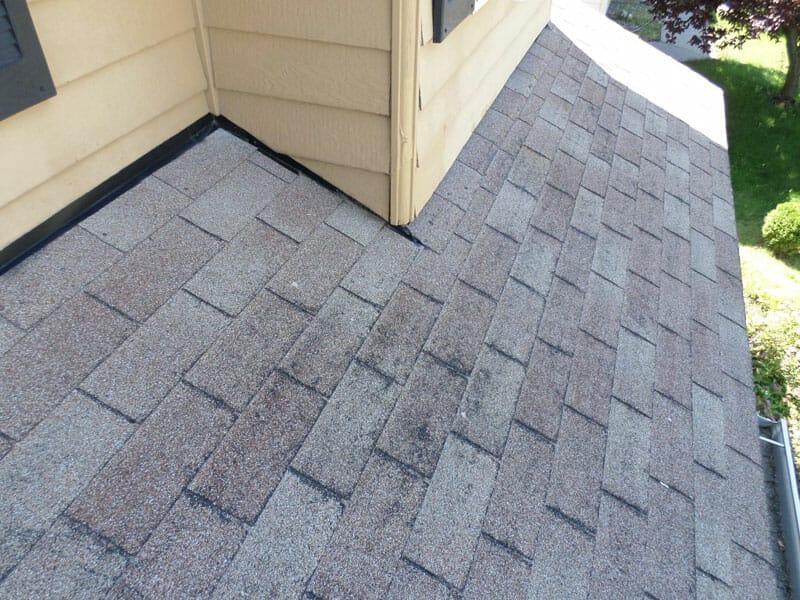1. Granule Loss

When you clean out your gutters at the end of the downspout, do you see a pile of granules? Find yourself wondering what that is? It is the granules from your shingles coming off. Roofs tend to lose more granules toward the end of their life cycle. Ultimately, coming off in your downspout.
2. Peeling Paint Near The Roof Line

Blistering or peeling paint near the roofline is typically a sign of gradual humidity buildup that results from poor ventilation of the roof and attic. The problems this creates can be worsened by a storm. Peeling paint is another symptom that’s actually a critical barometer of the damage your roof has suffered.
3. Curling Shingles

If a shingle curls, typically, it’s time to replace your roof.
This could be from poor ventilation in a vaulted ceiling section or standard attic space
Here’s what to look for:
Curling & lifted shingles
Bald spots
Shingles that are missing
4. Water Damage

Do you have water stains on your ceiling? Sometimes ice dams form throughout the winter and can lead to pretty nasty leaks if not dealt with.
Ice dams form when a warm roof, above 32 degrees F, allows snow to melt and run down your roof. The edge of the roof remains below 32 degrees F, freezing the water when it hits the cold roof edge or eave. (See Diagram Below)

Without proper snow removal, it can develop an ice mass that prevents melting snow from properly draining off the roof. When the water is unable to drain, it can get underneath roof shingles and into your home.
Ice dams, because of their weight, can also tear off gutters, loosen shingles, and cause water to back up, causing damage to walls, ceilings, and insulation.
